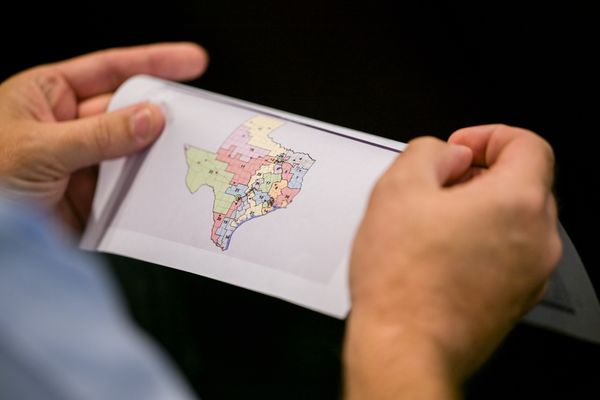A decision could be reached in the coming months in a long-running lawsuit that links Chicago landmark districts to racial segregation and a lack of affordable housing.
The city of Chicago in late January requested a judge rule in its favor on the lawsuit, in which two Chicago residents challenged the creation of historic districts in Lincoln Park and West Town, saying the city had no legitimate reason to apply the designation to their communities.
The residents also said in their suit that the districts harm them, their neighborhoods and the city, including through “the perpetuation and exacerbation of racial and economic segregation ... and the deprivation of reasonably affordable housing for minorities, single persons, the elderly, persons with disabilities, renters, single parents, and other vulnerable groups.”
The lawsuit highlights the tension between housing advocates and historic preservationists. Ward Miller, executive director of Preservation Chicago, said historic districts can protect the built environment, provide stability and serve as neighborhood anchors.
“I think that landmark districts, a lot of times, are really the core of Chicago,” he said. “And when you think of neighborhoods and the popularity of neighborhoods, you almost think of them as really being based on a beautiful district of buildings, and often a landmark district.”
But the lawsuit argues that the ability to create more housing in high-demand neighborhoods like the challenged district in Lincoln Park would reduce home purchase and rent prices, leading to more housing opportunities. The historic district blocked the potential to build those additional units, which “perpetuate(s) racial, social and economic segregation and discrimination.”
Lauren Buitta, who manages the lawsuit on behalf of one of the residents who filed it, Albert Hanna, who died in 2020, said landmarking and historic preservation wield a significant amount of power over how communities develop.
“Al saw racial segregation in the city of Chicago as one of the most detrimental realities of the city’s health,” Buitta said. “He fully believed that denser areas with more opportunity for affordable housing throughout the city would yield a healthier, more vibrant city.”
A judge’s decision on the request from the city of Chicago, which is the only remaining defendant in the case, could address the fate of the two landmark districts, or send the case to trial.
The suit was first filed against the city and related agencies and officials in 2006 by Hanna, a former mortgage banker who lived in the Arlington-Deming District in Lincoln Park, and Carol Mrowka, who owns a home in the East Village District in West Town.
Hanna and Mrowka initially challenged both Chicago’s landmarks ordinance as a whole and the creation of the two historic districts where they lived. The challenge to the landmarks ordinance was closely watched by preservationists around the country and was believed to hold significance for efforts to save historic buildings nationwide.
The case has wound its way through the courts, and eventually the challenge to the overall ordinance was rebuffed. The remaining parts of the case challenge the creation of the Arlington-Deming District, given final approval in 2007, and the 2006 landmarking of the East Village District.
In the years since the lawsuit was filed, affordable housing and segregation have taken on renewed focus in Chicago. A proposed landmark district in Pilsen failed in 2020, after months of resistance from residents worried the rules to protect historic buildings would make it expensive and difficult for them to perform repairs on their homes.
The U.S. Department of Housing and Urban Development is also investigating the longtime tradition of aldermanic prerogative and affordable housing, after activists and lawyers filed a complaint in 2018 alleging that allowing aldermen de facto veto power over most development proposals in their wards promotes housing discrimination by keeping low-income minorities from moving into affluent white neighborhoods.
In an updated version of their lawsuit filed in 2010, Hanna and Mrowka said the city had no basis to apply the landmark designation to their neighborhoods, and the creation of the two districts “not only delegitimizes valid historic preservation efforts, but is the product of deception and misinformation.”
They said the districts thwarted environmental efforts, fair housing policies, handicap accessibility and efforts to boost tax revenue.
“The practice challenged herein, landmarking significant (swaths) of the City’s most desirable communities, is the City’s latest tool in its continuing efforts to unjustifiably control development in the City’s most attractive neighborhoods, so as to preclude the development of reasonably affordable housing, particularly rental housing,” they said in the lawsuit.
A spokeswoman for the city’s Law Department declined to comment. In recent court filings, the city’s attorneys disputed Hanna and Mrowka’s claims that the city violated their rights and had no basis to designate their communities landmark districts.
They cited a former assistant historic preservation commissioner who was once named in the case, who “testified that the city believed that preserving important and distinctive neighborhoods that have historic architectural and cultural character was important to make Chicago and its neighborhoods unique.” He also testified “about the changing character of the (East Village District) neighborhood and high amount of demolition and construction that was happening at the time the city considered designation,” according to the filing.
An attorney for Hanna’s estate and Mrowka declined to comment.
Buitta said land-use policies, like zoning and landmarking, are one of the key ways the city maintains what she termed “status quo.” She hopes the lawsuit demonstrates the power of those policies in maintaining racial segregation, she said.
“Through Al’s perspective, landmarking is the most dangerous because it has the guise of historic preservation,” she said. “As Al would say, he wasn’t against historic preservation, he was against the abuse of historic preservation to keep out poor families and families of color.”
But Miller, of Preservation Chicago, described landmark districts as a way of making neighborhoods desirable and protecting homeowners from large-scale, “cookie-cutter” developments in their neighborhoods that can send land values shooting up, displacing residents, he said.
Development of larger buildings can also overwhelm nearby houses or two- and three-flats, affecting residents’ quality of life, he said.
“We have a responsibility to protect these buildings,” he said. “Chicago is known as an architectural capital of North America and the nation, and I think we really have to take that seriously. We’re seeing so much redevelopment and destruction that it’s really harming that legacy.”
Buitta said she hopes historic preservationists see the lawsuit as an opportunity to rethink landmarking.
“I would hope that historic preservationists could see this as an opportunity to revisit the language of their respective ordinances through an equity lens, given we’re having this broader national conversation around equity.”







